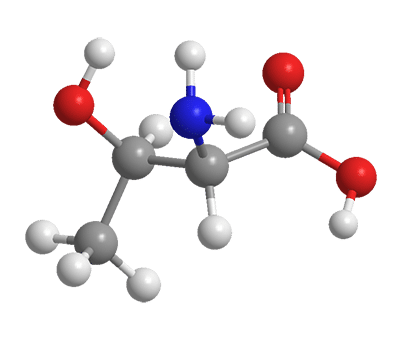Introduction
In biochemistry and nutrition, amino acids play a crucial role as the building blocks of proteins and enzymes. Among these amino acids, L-threonine and L-valine are essential amino acids, meaning the body cannot synthesize them and must be obtained through diet. This article delves into these two amino acids’ functions, sources, and impacts, providing a thorough comparison to highlight their unique roles and similarities.
Amino Acids Overview
Essential Amino Acids
Essential amino acids are those that the human body cannot produce on its own and, therefore, must be consumed through dietary sources. L-threonine and L-valine are two such amino acids, each contributing uniquely to metabolic processes and overall health.
Basic Structure and Function
Both L-threonine and L-valine belong to the group of amino acids, which are organic compounds composed of an amino group (-NH2), a carboxyl group (-COOH), and a distinctive side chain. Their side chains determine their specific roles and characteristics in the body.
L-Threonine
Chemical Structure and Properties
L-threonine is classified as a polar amino acid due to its hydroxyl group (-OH) attached to its side chain. This property makes it highly soluble in water and essential for various biochemical functions.
Biological Functions
- Protein Synthesis: L-threonine is integral to protein synthesis, contributing to the structure and function of proteins in the body.
- Immune Function: It supports immune system function by producing antibodies and other immune system components.
- Digestive Health: Threonine is a critical component of mucin, a protein that helps form the protective mucus lining of the digestive tract.
Dietary Sources
L-Threonine can be found in various dietary sources, including:
- Meat and poultry
- Fish
- Dairy products
- Eggs
- Legumes
- Nuts and seeds
Recommended Intake and Deficiency
The recommended daily intake of L-threonine varies depending on age, sex, and health status. Deficiency in L-threonine can lead to a range of health issues, including impaired protein synthesis, weakened immune response, and digestive problems.
L-Valine
Chemical Structure and Properties
L-valine is a non-polar, aliphatic amino acid characterized by its hydrophobic side chain. This feature affects its role in protein structure and function, particularly its interactions with other hydrophobic amino acids.
Biological Functions
- Muscle Metabolism: L-valine plays a crucial role in muscle metabolism, promoting muscle growth and repair.
- Energy Production: It contributes to energy production by being involved in the synthesis of glucose through gluconeogenesis.
- Mental Function: Valine helps maintain mental alertness and cognitive function, although its primary roles are more related to physical health.
Dietary Sources
L-Valine is widely available in dietary sources, including:
- Meat and poultry
- Fish
- Dairy products
- Eggs
- Legumes
- Nuts and seeds
Recommended Intake and Deficiency
Like L-Threonine, the recommended intake of L-Valine varies. Deficiency in L-valine can result in muscle wasting, fatigue, and poor mental function.
Comparative Analysis
Similarities
- Essentiality: L-threonine and L-valine are essential amino acids required for various bodily functions and must be obtained through diet.
- Dietary Sources: They are present in multiple animal and plant-based foods, making it relatively easy to meet daily requirements through a balanced diet.
Differences
- Functional Roles: L-threonine is more involved in protein synthesis, immune function, and digestive health, while L-valine is primarily associated with muscle metabolism, energy production, and mental function.
- Chemical Properties: L-threonine is polar and hydrophilic, influencing its solubility and function in aqueous environments, whereas L-valine is non-polar and hydrophobic, affecting its role in protein structure and interaction.
Health Implications
Balancing Intake
Maintaining a balance of L-threonine and L-valine is crucial for overall health. While both are necessary, their roles in the body highlight the importance of consuming a varied diet that provides adequate amounts of each.
Supplementation
In some cases, supplementation with L-threonine or L-valine may be recommended, especially for individuals with specific health conditions or dietary restrictions. However, consulting with a healthcare professional before starting any supplementation is essential.
Conclusion
L-threonine and L-valine are essential amino acids with distinct but complementary bodily roles. Understanding their functions, sources, and implications for health can help individuals make informed dietary choices to support overall well-being. Whether through a balanced diet or targeted supplementation, ensuring adequate intake of these amino acids is vital for maintaining optimal health.

